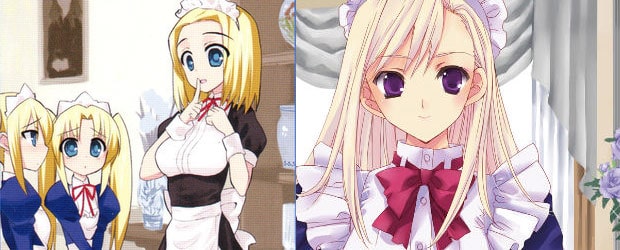
WHAT IS DEFAULT DESIGN?
Default design is a body of design choices, particularly thematic, that you don’t think about. You include them in your game design because they’re prevalent in other kinds of thematically similar games.
Looking at video games, the single biggest default design choice is violence as conflict resolution. And while one violent videogame is not going to necessarily make any individual person pick up a gun and start shooting people, a body of them conveys a message and contributes to the overall cultural norms of society, depending on its presentation.
 What message does “shooting your enemy” convey? Call of Duty and Splatoon demonstrate how different treatments of the same mechanic can convey a different message.
What message does “shooting your enemy” convey? Call of Duty and Splatoon demonstrate how different treatments of the same mechanic can convey a different message.Designing by default in theme or mechanics is dangerous, because it can perpetuate narratives whether we intend it or not. When we tacitly affirm and endorse problematic societal norms about race and gender relations, conflict resolution, or morals, we’re sending messages that may be against the values of our audience, or even our own.
DEFAULT IN MECHANICS
When we design a board game or any media, we are providing tools and context for viewing an experience. As mentioned in a recent Mythcreants post, Dungeons and Dragons or Pathfinder roleplaying games have pages of detailed mechanics for resolving conflict.
By providing a wide variety of tools for envisioning combat, and only a couple paragraphs for, say, political relations between half-dragons and gnomes, your mechanics endorse a hack-and-slash campaign more than anything else (my RP group jokingly refers to the typical adventuring party as “murder hobos”).

Why is there so much fighting in D&D? Because that’s where the mechanics point the player’s perspective.
Sure, it’s not impossible to create the diplomatic half-dragon/gnome court drama that you’ve always wanted in a campaign. There’s a couple paragraphs in there about the half-dragon’s value system and history. And especially in roleplay games, many GMs improvise. But if the only tool you provide your players is a hammer, you can’t be surprised if everything looks like a nail to them.
DEFAULT IN THEME
Let’s look at board games again. On the upside, they are often much more abstracted. It’s easier for a player to overlay their own perspective when we put a pawn in front of someone and say “this is you”.
But the more detailed and immersive it gets, the more you have to think about what that theme means in relation to your message. Games like Elder Sign ask you to become more invested in your assigned race/gender/age/background, which focuses your perspective.
MAKING THE EXPERIENCE MORE FOCUSED AND IMMERSIVE MEANS THE MESSAGES FROM YOUR DEFAULT DESIGN DECISIONS HAVE MORE IMPACT, FOR BETTER OR WORSE.
When you create something like Ladies and Gentlemen and say “the man earns the money and the woman spends it on clothing”, it aligns with an existing cultural narrative about gender relations and breadwinning, and tacitly affirms that as a societal norm.
Mechanics and theme aren’t the only thing that make a game. Sometimes we can leave it to the players to subvert the mechanics or theme with their own narrative. Sometimes this can even be the point, as players of Brenda Romero’s Train demonstrated.
But in cases where a game is trying to be entertaining and not socially challenging, you end up sending problematic messages. Ladies and Gentlemen does not give players the thematic tools to interpret their actions in another, less problematic way (the gnome mines the gold, and the half-dragon adds it to its hoard, for example). And that makes for a poor experience and short-sighted game design.
WHEN CULTURAL DEFAULTS CLASH
At a recent designer meetup focused on deckbuilders, I was introduced to Tanto Cuore. It adopts a Japanese maid theme very common and normal in anime/manga stories: you’re a Lord buying personal maids with “Love” points. The host was apologetic and embarrassed, because while the game had great mechanics, the cultural narrative clashed so hard with his values that it was difficult for him to recommend it.

Maid themes: common in Japan, not so common in the U.S.
Without getting into the complex topic of Japanese societal views of women, it’s clear that when you introduce a problematic cultural norm into a culture where this narrative is not shared, they notice and may disengage. And as board games spread internationally, this is something a good designer will be aware of.
OWN YOUR DESIGN DECISIONS AND BUILD STRONGER GAMES
There are choices we can make as game designers in our mechanics, theme, and presentation to convey strong messages, good or bad. You don’t have to agree with the specific issues I’ve mentioned, but you do need to make sure you’re aware of what messages your choices are sending and that you agree with them.
EVEN (AND SOMETIMES ESPECIALLY) WHEN YOU DON’T FEEL LIKE MAKING A CHOICE AT ALL.








